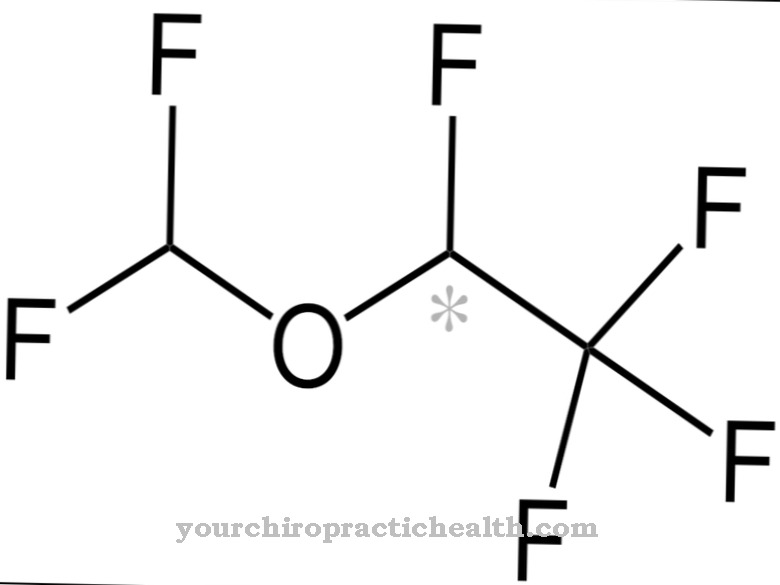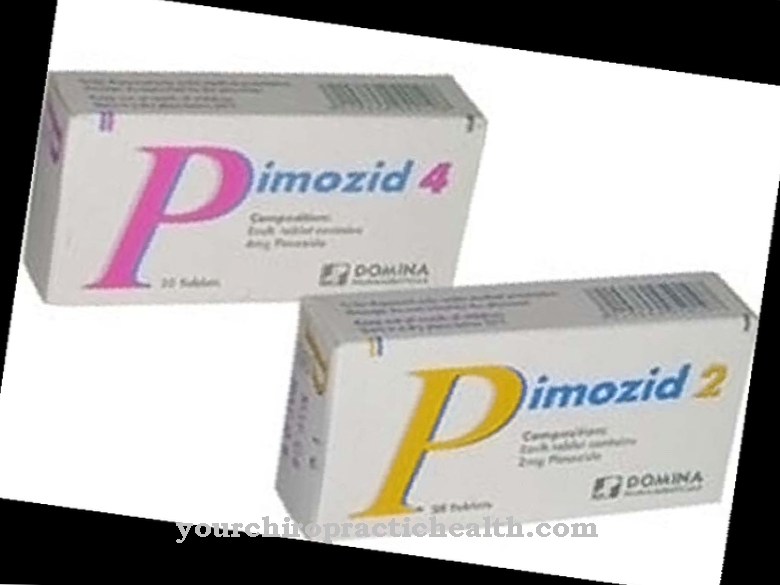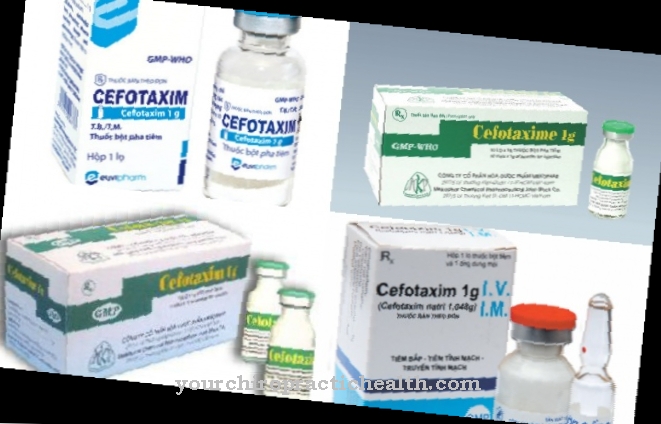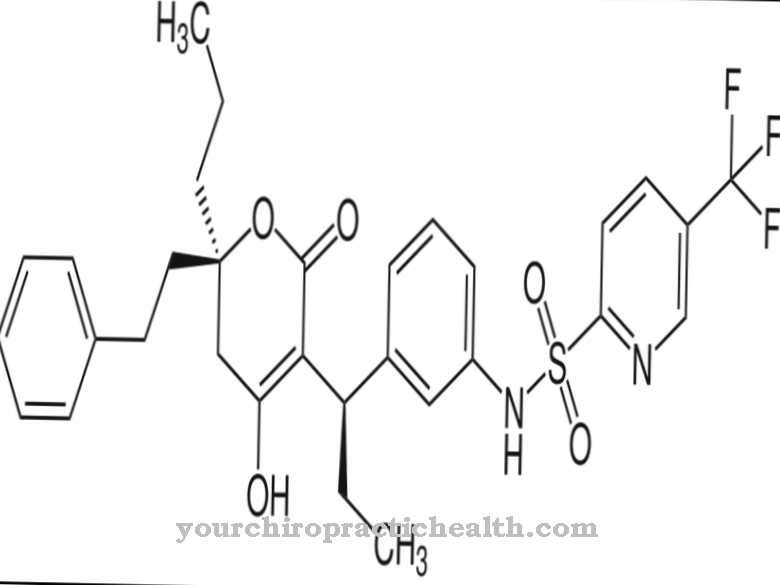Magaldrat is a pharmaceutical drug belonging to the antacid group. It's also by the name Pentaaluminium-decamagnesium-hentriacontahydroxid and Aluminum Magnesium Hydroxide Sulphate Hydrate known. This drug is used to treat excess gastric acid secretion and to treat its consequences.
What is Magaldrat?

Magaldrat is an acid-neutralizing drug from the group of active ingredients called antacids. This pharmacological substance has a layered lattice structure and is therefore also known under the name of layered lattice antacid.
Magaldrat is made up of the components of aluminum and magnesium salts and therefore acts on acid-related complaints in the gastrointestinal tract. The drug neutralizes and binds excess gastric acid produced and protects the gastric mucosa from irreversible damage.
The magaldrate is therefore used for the treatment of acid-related stomach problems such as heartburn or gastrointestinal ulcers. It is a pharmacy-only drug that can be purchased in the form of tablets or gel. The drug is not used for prophylactic treatment, but rather as an on-demand drug for acute symptoms. The dosage must be discussed with the treating specialist.
Pharmacological effect
The different body cells in the gastric mucosa produce 1-3 liters of gastric juice daily. The cells to which this activity is assigned are called secondary cells, parietal cells and main cells. The gastric acid produced is a colorless, slightly cloudy, aqueous secretion with a pH of around 0.9 - 1.5. This low pH value makes it clear that gastric acid is a very acidic and also aggressive liquid.
In order to induce the body's cells to produce stomach acid, chemical and mechanical irritation is necessary through the formation of hormones in the digestive tract and the irritation from the vagus nerve. The hormones required for this process are histamine, gastrin and secretin. The parietal cell produces hydrochloric acid that is isotonic in blood and is made up of hydrogen ions and chlorine ions.
The pharmacological drug magaldrate is a complex and coordination compound with a crystalline layer lattice structure. Therefore it is also categorized into the active substance class of layered lattice antacidia. This chemical structure is created by the superposition of magnesium and aluminum. Their chemical structure is firmly connected to one another in lattice layers.
The neutralizing effect on gastric acid is triggered by the binding of the protons of the sulfate anions and the hydroxide ions in the area of the interstitial layers. If this compound hits the stomach acid, the lattice structure dissolves and neutralization occurs. The chemical process is only stopped when the stomach acid has reached a pH value of at least 5. This mixture of substances creates a so-called acid buffer. This acid buffer enables a constant pH of the stomach acid of 3-5.
The magaldrate is not reabsorbed from the digestive tract. Only small amounts of magnesium and aluminum ions are absorbed and released during neutralization, depending on the pH value. Cations that cannot be absorbed are metabolized to poorly soluble phosphates while they pass through the intestinal tract and are excreted in the stool. The resorbable ions are bound to plasma proteins.
In the event of a disturbance of the kidney function or an overdose of magaldrate, the plasma protein binding capacity may be exceeded. This can lead to the accumulation of proteins in the bones, in the central nervous system or in the organs.
However, this does not affect the amount of magnesium and aluminum in the blood. Occasionally only minimal increases in aluminum in the blood serum can be seen. The prerequisite for this, however, is that the drug is taken correctly and that it is well adapted to the clinical picture. The substances in the magaldrate are excreted through the digestive system. Only a small proportion of the absorbable aluminum ions is excreted through the kidneys.
Medical application & use
The medicinal product magaldrate is used for the therapy and symptomatic treatment of excess gastric acid build-up. The excess stomach acid can lead to acute problems such as dyseptic symptoms in the upper abdomen, reflux disease or heartburn (reflux oesophagitis), inflammation of the stomach lining (gastritis), a feeling of fullness and general acid-related stomach problems. Magaldrat can also make a positive contribution to the healing process in the case of gastric ulcers (gastric ulcer) or duodenal ulcer (ulcus duodeni).
The effect is due to the buffering reaction and the dose- and pH-dependent binding of the cytotoxic bile acid and lysolecithin. Unbound, the substances are held responsible for the development of gastric ulcers and gastric mucosal inflammation and can cause irreversible damage. The general function of the muscles of the stomach and digestive tract is not impaired or influenced by the drug.
You can find your medication here
➔ Medication for heartburn and bloatingRisks & side effects
A change in the consistency of the stool is observed as a common side effect. Although this is often very soft due to the magaldrate, diarrhea rarely occurs. If the drug is taken in high doses over a longer period of time, it can lead to intoxication due to an increased aluminum and magnesium level in the blood serum. Deposition of aluminum in the bones and central nervous system, affecting the brain, can also occur. In very rare cases, a reduced phosphate plasma level can lead to painful softening of the bones (osteomalacia).
If possible, the medicinal product magaldrate should not be taken with other medicinal products as it affects the absorption, distribution and excretion of pharmacological substances. When taking several drugs, there should always be about 2 hours between intake. Furthermore, Magaldrat should not be taken with acidic drinks such as fruit juice or wine.


























